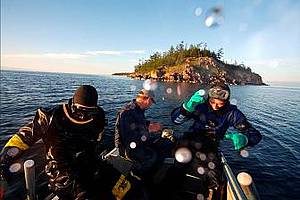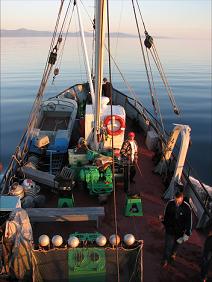 |
Little is known about the evolutionary response of species to global climate change because time scales are too long to be directly studied. Recent phylogenetic studies on taxa inhabiting ancient lakes suggested that climate-induced environmental changes can be reconstructed by analyzing genetic patterns within and among species. In fact such evolutionary responses seem to coincide with climate-driven lake level-fluctuations and to be concentrated within narrow periods of time. Yet, it remains unclear to what extent such changes occur simultaneously across taxonomic groups and ecological guilds. Our study attempts to combine phylogenetic and paleoclimate data to test how patterns of evolutionary diversification agree with predictions of three groups of hypotheses (i) the turnover pulse and paleo-ecological incumbency hypotheses, predicting that speciation pulses across major taxa coincide with times of major lake level changes; (ii) the ecological locking hypothesis, also predicts simultaneous speciation pulses but not necessarily at times of major lake level changes; (iii) the individual response hypothesis, predicts no correlation of speciation pulses across taxa. These hypotheses will be tested using mtDNA sequences from selected endemic taxa (fish, crustaceans, molluscs) of Lakes Baikal and Tanganyika, the two oldest lakes on Earth. Patterns of intraspecific diversity (reflecting dynamics of population size changes) and of the synchrony of interspecific divergences across taxa are used to investigate the evolutionary effects of lake level changes on different time scales, in taxa occurring in different habitats, within lakes and across continents. Combined with paleoclimatic information this will elucidate the effects of global climatic induced changes on the more general dynamics of diversification, loss of variation, adaptive radiations and speciation events. Computer simulations of sequence evolution generated in various ecological scenarios will be used to investigate whether real sequence data of natural faunas can be used to evaluate and predict the impact of future climate change on these faunas.
 |
Project leader:
Dr. Erik Verheyen
Vertebrate Dept
Royal Belgian Institute of Natural Sciences
1000 Brussels Belgium
Phone:+32 2 627 4286
Fax:+32 2 627 4141
Email
Principal Investigators:
Dr. Christian Sturmbauer, University of Graz, AT
Dr. Isabelle Schön, royal Belgian Institute of Natural Sciences, BE
Dr. Risto Väinölä, University of Helsinki, FI
Dr. Emmanuel Paradis, Université de Montpellier II, FR
Dr. Kenneth Irvine, Trinity College Dublin, IE
Dr. Ellinor Michel, Natural History Museum London, UK
Dr. Jonathan Todd, Natural History Museum London, UK
Associated Group:
Dr. Dirk Verschuren, University of Gent, BE
Dr. Dimitri Sherbakov, Limnological Institute SB RAS, RU


